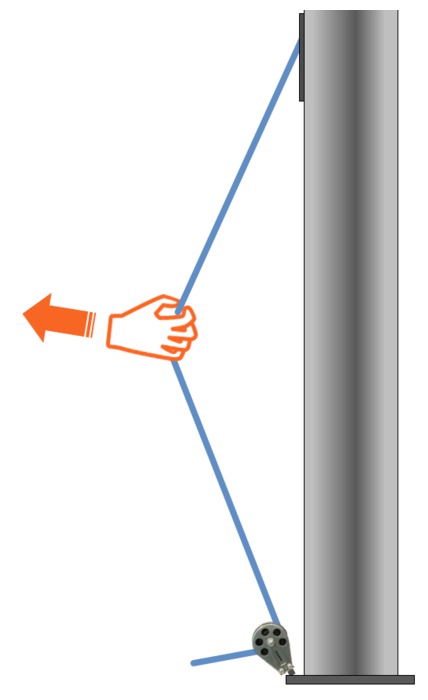Preparing the mainsail
Before departure, you must prepare the mainsail so that it can be deployed quickly.
- Remove the mainsail cover and attach the halyard.
- Make sure the halyard is uncoiled and ready to hoist the mainsail.
- When docking the boat, leave the halyard attached until the boat is safely tied up. If the engine cuts out due to malfunction, too low throttle or getting a dockline in the propeller, the mainsail must be ready to hoist quickly.
- Make sure the reef lines are loose enough not to hinder hoisting the mainsail.
- After the mainsail is taken down and flaked, it should be secured with four sail ties. We have sail ties with a sewn loop on one end. You simply wrap the line around the boom and sail, put the end of the sail tie thru the loop and then tie a slipped half hitch. Please do not use anything more complicated than a slipped half hitch. It is not necessary.
- Never unfasten a halyard from the head of the sail and let it go. Always hold onto it until it is secured. An accidental tug on the opposite end of an unsecured halyard will require a trip up the mast to retrieve it.


- Turning line around a block with a winch handle is a good way to finish line tension but it can be a slow arduous grind to take a quantity of line in.
- A line can be taken into a block much quicker with a second person 'sweating' the line. Also known as 'swigging', it is the process of hauling sideways on a line, usually a halyard, to gain more tension than is possible when pulling parallel with the load of the line.